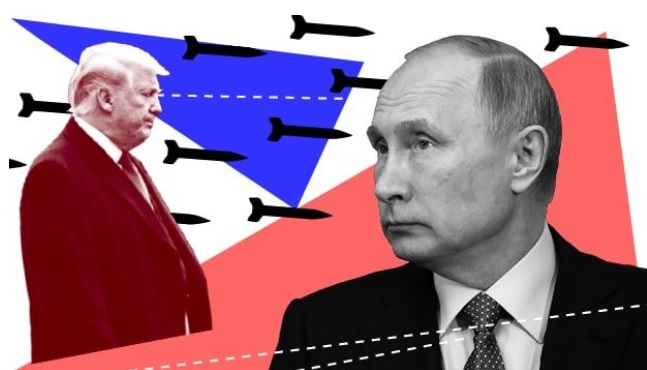
US strikes in Syria could see Russian response that pits world's most sophisticated weapons against one another
The
Telegraph
Roland Oliphant
April 11, 2018

Donald Trump's promise to carry out US strikes against Syria despite Russian warnings could result in a show-down between two of the world's most sophisticated weapons systems.
American military action against Bashar al-Assad's military and chemical weapons capability will almost certainly come in the form of a hail of Tomahawk missiles, the $832,000-a-pop sea-launched weapons that were used against a Syrian airbase in April last year.
But that strike could be significantly disrupted, if not entirely thwarted, by Russia's state of the art but previously untested S-400 air defence system.
Launched from US Navy ships and Royal Navy submarines, the Tomahawks can deliver a 1000lb (450kg) warhead with pin-point accuracy from ranges of 800 to 1500 miles.
And by flying at 550mph just a few metres above the ground, they can beat most conventional radar and air defence systems.
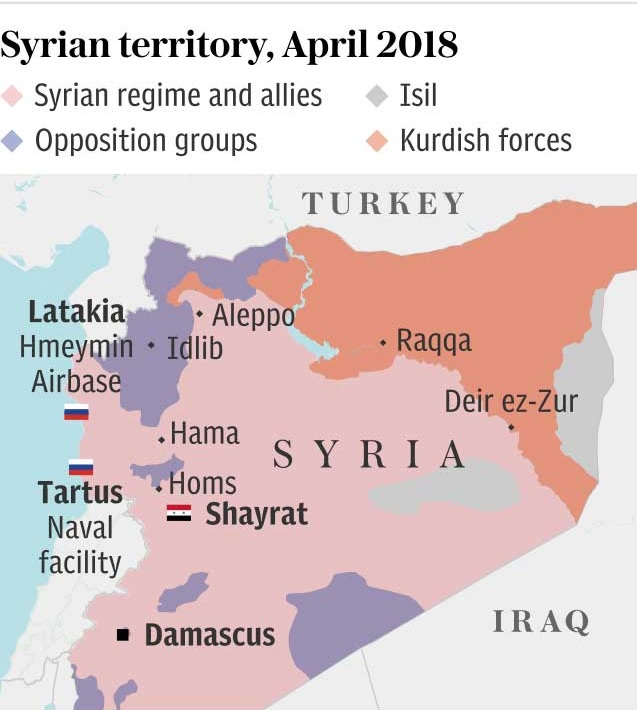
The long-range, subsonic missiles have dominated America's battlefields for nearly three decades, pounding targets in Iraq, Kosovo, Afghanistan and Libya.
But they have never been challenged by an air defence system as modern or sophisticated as the S-400.
The latest generation in a series of increasingly sophisticated systems, Russia deployed the S-400 to its Hmeymim airbase in Syria in 2015 after a Turkish jet fighter shot down a Russian bomber.
Described as one of the most effective air defence systems on the planet, it comes equipped with a sophisticated radar and control array that allows it to target dozens of enemy aircraft simultaneously at ranges of up to 250 miles.
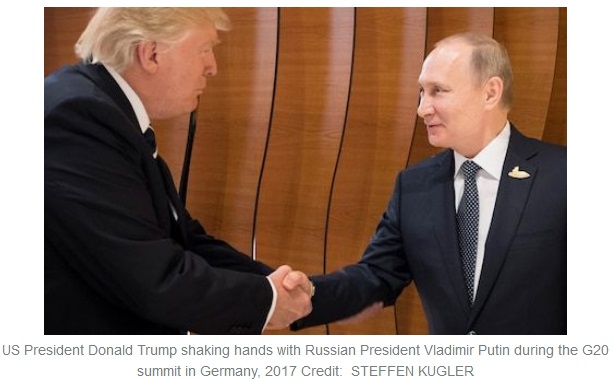
And while its missile interceptor capability is shorter range - about 75 miles - its missiles travel at a thousand metres a second and can hit low-flying targets at just a few metres of altitude - perfect for killing sub-sonic Tomahawks.
"If it is one Tomahawk versus one S-400, then the S-400 will have a very good chance of intercepting it," said Justin Bronk of the Royal United Services Institute.
But US commanders may plan to overcome that impressive hit rate by firing an overwhelming number of Tomahawks.
The 9M96, which the S400 generally uses against incoming cruise missiles, has an (official) successful interception rate of about 70 per cent, so doctrine calls for two missiles to be fired at each target to guarantee a hit.
Western experts estimate that the S-400 battery at Russia's Hmeymin airbase probably has up to 60 missiles - plenty against a squadron of fast jets out of Turkey, but not enough to see off a full scale salvo of US cruise missiles.
"The system should have plenty of capacity to shoot down individual missiles. But it is fairly easy to swamp it just in terms of the sheer number of interceptors required," said Mr Bronk.
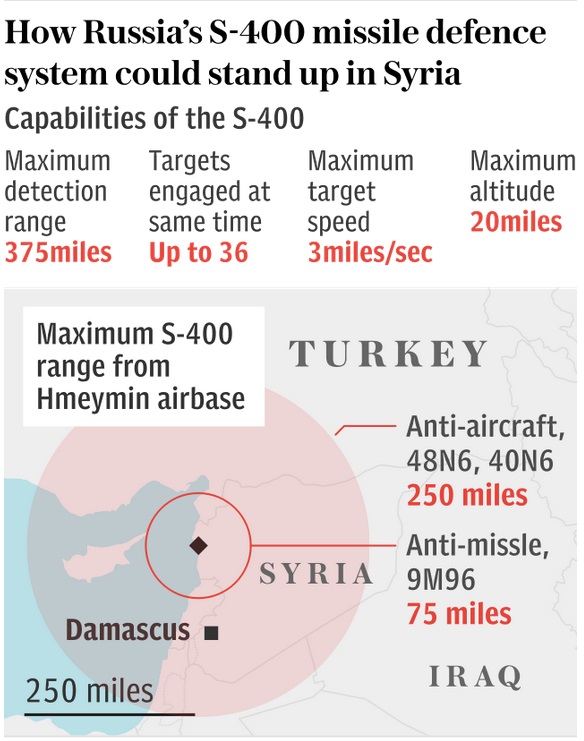
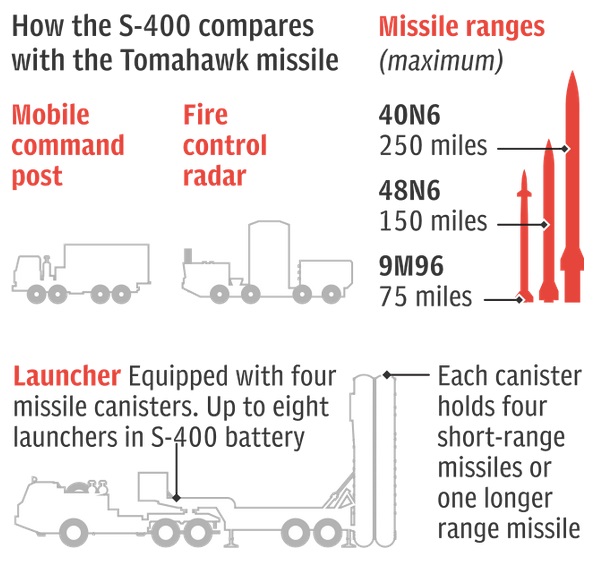
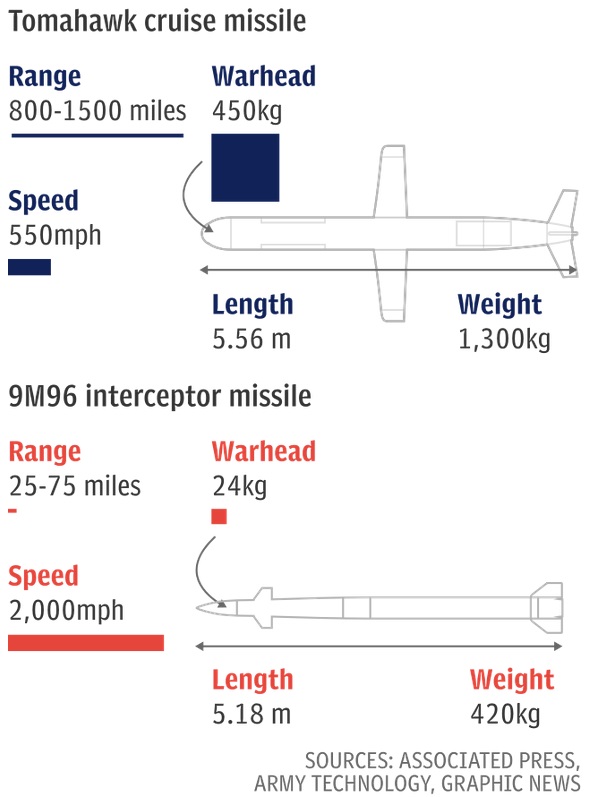
"A strike of the magnitude seen at the Shayrat airbase last year would be far beyond the missile capacity of the S400 battery that we know to be in Syria."
The US fired 59 Tomahawks at Syria's Shayrat airbase after a sarin gas attack in Khan Sheikhoun in April last year. Russia did not attempt to intercept that strike.
The S400 is not the only defence coalition commanders have to worry about. Russia is also believed to have missile cruisers carrying the older S-300 anti-aircraft system off the coast and defending its naval base at Tartus.
It also has a number of SU-30 interceptor aircraft in Syria, which could pose a serious challenge to coalition pilots.
Assad's Syrian Arab Army fields a formidable array of older, mostly Soviet-designed surface to air missiles, which while little threat to cruise missiles could prove extremely dangerous to any coalition aircraft that came within range.
That effectively rules
out a campaign of conventional airstrikes, which would risk the lives of the
coalition pilots and gravely raise the risk of direct conflict between Russian
and Western forces.
The coalition has other options to beat the Russian defences. They include Britain's Storm Shadow cruise missile, an air-launched long range "stealth" cruise missile designed to evade radar that could be fired by RAF Tornadoes flying out of the Akrotiri airbase in Cyprus.
This cruise missile showdown has profound implications. The S400's fearsome reputation grants it deterrent effect very useful to Russia's defence doctrine in its on-going confrontation with Nato.
Going up against Tomahawks in Syria could confirm that reputation - or, if it failed to shoot down a respectable number, destroy it.
"That could be why the Russians refrained from intercepting the Tomahawks fired at Shayrat last year," said Mr Bronk. "Nothing is more terrifying than the unknown."